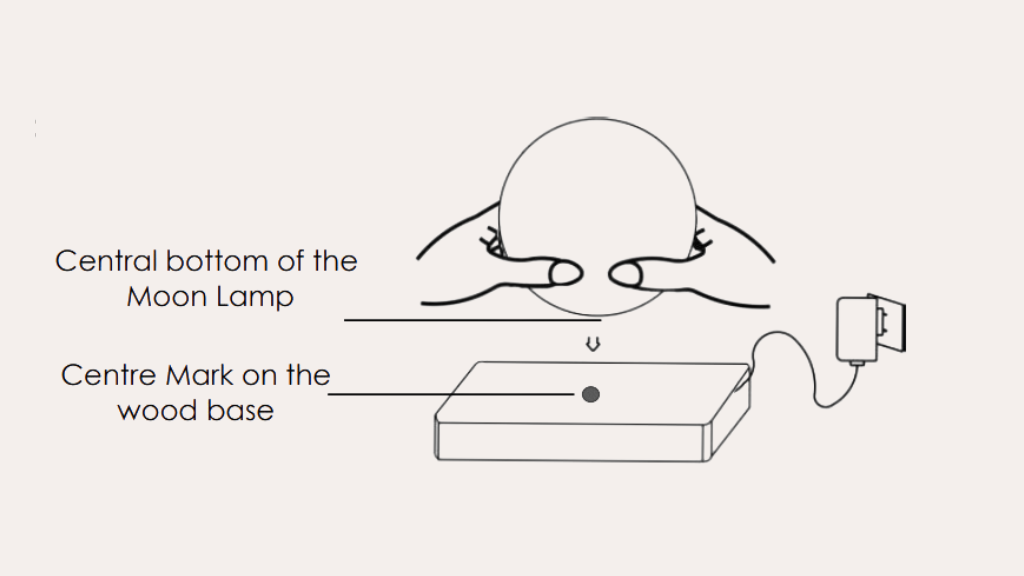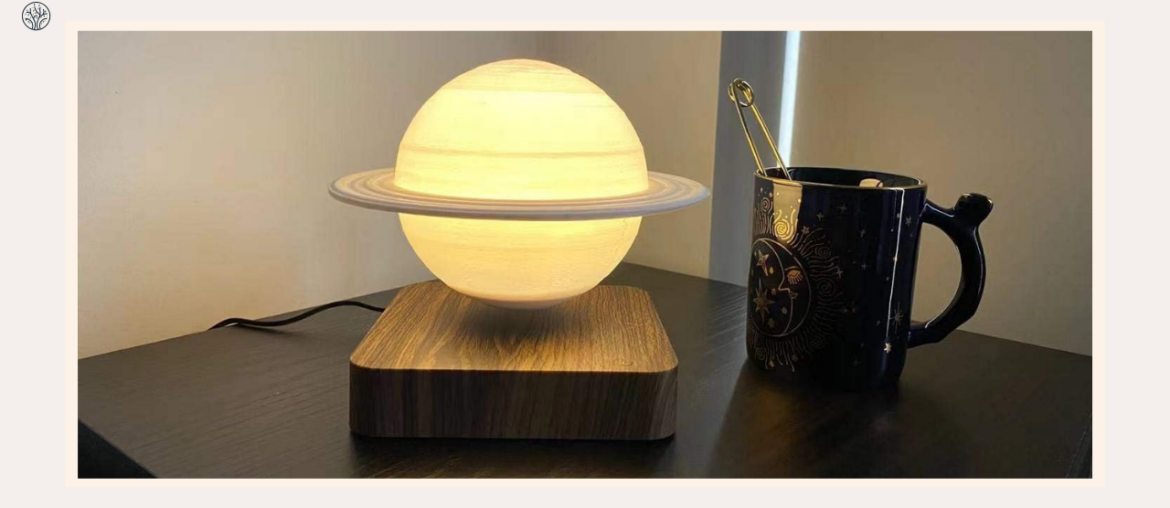From my last blog, you might already know how to choose the best levitating moon lamps and has successfully picked one that suits your need. Now comes the exciting part: setting up your levitating moon lamp and enjoying its irresistible charm.
1. Unbox your lamp
First, you need to unbox the lamp and check if all the parts are present and intact. Normally, the box should contain a 3D-printed moon, a base, a power source (an adaptor or some batteries), and an instruction manual. Once you have verified everything, you can proceed to the next step.
2. Set up the base
The base is one of the most important parts of a levitating moon lamp. It creates a magnetic field that allows the moon to float. It is important to place the base on a flat surface and, if your lamp is powered by an electric cord, make sure the plug type matches your outlet. Do not force a plug into an outlet that does not fit, as it can damage the plug. Once plugged in, the base is ready to use. Note that you do not have to turn on the base, as the on/off button on the base only controls the light, not the levitation.
3. Levitate your moon

First, identify the magnet side of the lamp, which is the heavier part. You can also see it with your eyes and place it on a flat surface. Next, use both hands to lift the moon gently and steadily. Slowly lower your hands when you feel an upward force from the base, usually about 1-1.5 inches above the base of the lamp.
4. Control your moon lamp
Once the moon is levitating above the base, you can choose to spin it lightly with your hand. The spin can last for a long time, as there is no friction between the lamp and the base. You can also choose to stop it completely by holding it still with both hands.
Depending on your lamp of choice, your lamp may have different color modes and lighting options. You can access this feature via remote control. Most lamps have a button or a touch sensor at the base to turn the lamp on or off.
5. Enjoy your moon lamp
After you have completed all the previous steps, you can relax and enjoy your warm white light levitating moon lamp. If you want to clean the lamp or move it to another place, just gently lift the moon off the base and turn off the power source. Then you can move it safely without worrying that the moon might fall off the base.
Levitating Moon Lamps Troubleshooting Tips
How do you fix a levitating moon lamp?
Sometimes, your levitating moon lamp may stop working properly due to various reasons such as power outage, accidental bumping, or magnet misalignment. Here are some common problems and how to fix them:
- If your levitating moon lamp falls off or does not levitate, you need to repeat the steps above to find the balance point again. Make sure there is no dust or dirt on the magnets and that they are facing the right direction.
- If your moon does not light up or flickers, you need to check if the wireless power supply is working properly. Make sure there is no obstruction between the base and the lampshade and that they are close enough to each other.
- If your lamp does not respond to the remote control, you need to check if the remote control has enough battery power or if it is within range of the base. You may also need to pair the remote control with the base again by pressing and holding both power buttons for 10 seconds.
How do you care for a levitating moon lamp?
A levitating moon lamp is a delicate device that requires proper care and maintenance to ensure its longevity and performance. Here are some tips on how to care for your levitating moon lamp:
- Do not expose your levitating moon lamp to direct sunlight, high temperature, humidity, or water. These could damage the electronics and affect the magnetic field.
- Do not place your levitating moon lamp near any metal objects or devices that emit strong magnetic fields such as speakers, TVs, computers, or microwaves. These could interfere with the levitation and cause instability or malfunction.
- Do not drop or hit your levitating moon lamp. This could damage the magnets, the wireless power supply, or the lampshade.
- Do not disassemble or modify your levitating moon lamp. This could void the warranty and cause serious injury or damage. If you encounter any problems that you cannot fix yourself, contact the manufacturer or seller for assistance.
Conclusion
A levitating moon lamp is a wonderful gadget that can add some magic and beauty to your space. It is easy to set up, control, and fix with some basic knowledge and skills. It is also a great gift idea for anyone who loves astronomy, science, or art.
I hope this article has helped you understand how to set up levitating moon lamps and how to fix them if there are any problems. Thank you for reading!





